Equity through SEL in the Math Classroom
India White • April 26, 2022
Equity Through SEL - Dr. India White
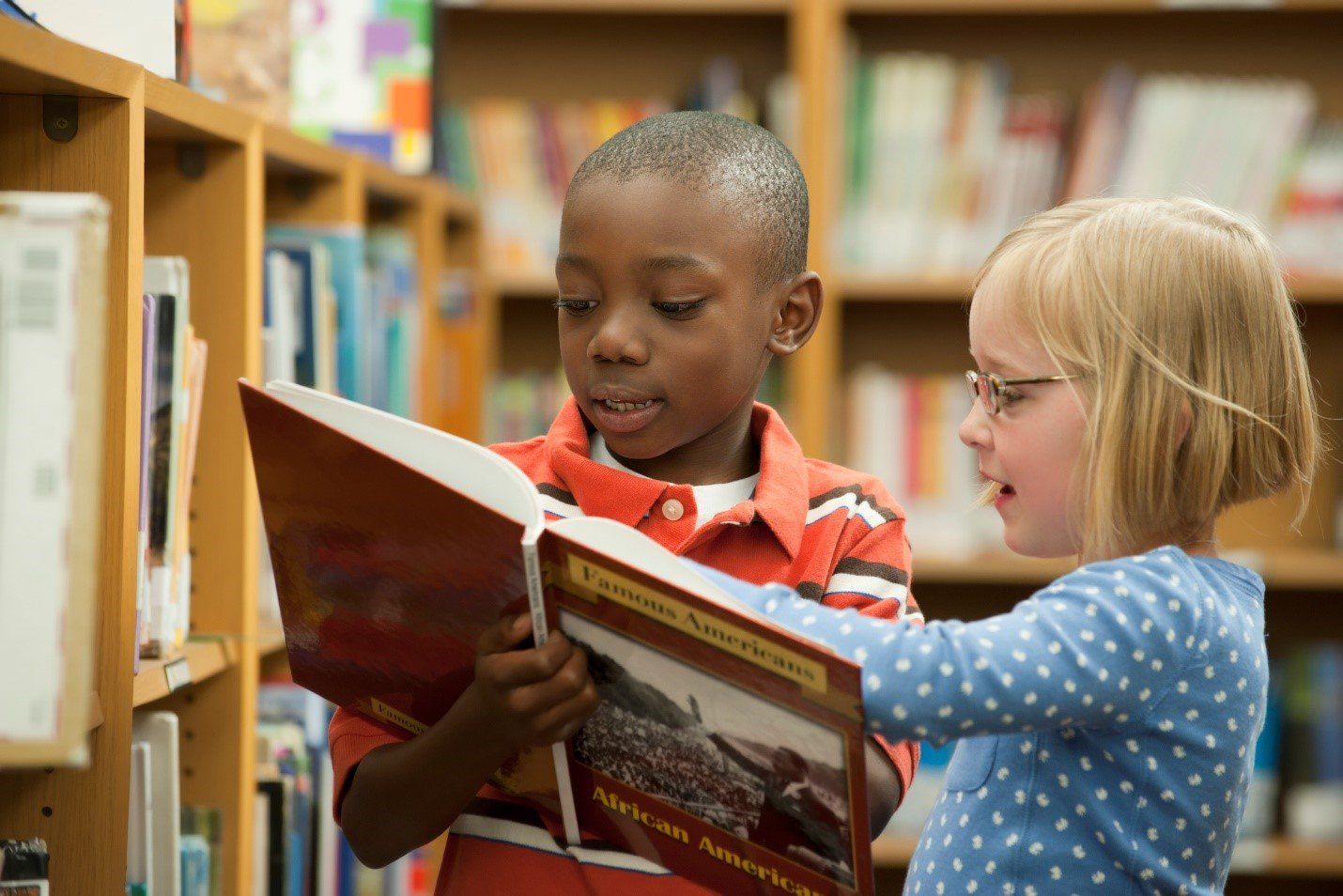
Equity Through SEL- Dr. India White
The term equity refers to the principle of fairness. When pertaining to education, by definition, equity has been known to NCTM as providing reasonable and appropriate accommodations as necessary while being fair and serving all students as needed in the classroom (NCTM, 2000). In a school environment, for instance, equity can be realized as a tool used to help with the principle of cohesion in the learning environment between students and teacher as well as those children of different social and educational backgrounds. Elements such as relationship building, and communication are most important at an early stage of social and emotional development for such an outcome in learning. While it is often used interchangeably with the related principle of equality, equity encompasses a wide variety of educational models, programs, and strategies that may be considered fair, but not necessarily equal. Further, there are elements such as students feeling safe about opening up verbally when talking to others such as how their day went. Effective learning environments will allow for that space for learners to confide in each other and the teacher in a classroom setting.
Socio-emotional Learning and Equitable Supports
SEL or socio-emotional learning is the tool used to allow for communication and relationship building to grow and cultivate into exactly what each learner needs to learn for him or her to succeed. We define social and emotional learning (SEL) as an integral part of education and human developmental process. It is part of that process through which all young people and adults acquire and apply the knowledge, skills, and attitudes to develop healthy identities, manage emotions and achieve personal and collective goals, feel, and show empathy for others, establish and supportive relationships, and make responsible and caring decisions. This is known as the CASEL 5 (CASEL, 2021). Each area of this framework addresses five broad and interrelated topics of competence and highlights examples for each: self-awareness, self-management maintain, social awareness, relationship building skills, and decision-making. As these areas interact, they impact the classroom climate, schoolwide culture, practices and policies, partnerships and aligned opportunities for successful learning. Through socio-emotional supports for learners, equitable practices can be established.
The Importance of Socio-Emotional Learning in the Math Classroom
Students who persevere tend to remain persistence are both social-emotional skills especially those children who successful in learning mathematics. The process of identifying a problem, looking for a solution, and persisting despite obstacles is highly relevant to learning mathematics. There’s a deep connection between persistence and math. Being able to encourage persistence is where those social and emotional learning skills come in.
There are several simple ways one can develop such skills in a classroom setting. First, for those children of preschool age, games that teach how to take turns, how to wait one’s turn, and how to win and lose graciously are most important. By playing such games, you are not only teaching those math skills needed to move forward as they develop, but also supporting those approaches to SEL learning.
In addition to games, the Education Development Center revealed how doing puzzles and folding origami figures are great ways to promote the mathematical skills of spatial relationships and geometric reasoning principles (EDC, 2020). Puzzles also help children see the fun and beauty in math and to find satisfaction in solving a challenging problem. These activities also support mathematical habits of mind that are needed to be successful in math, like problem-solving, patience and perseverance—which are also important social and emotional skills.
For middle schoolers, let them solve non-mathematical problems. Kids in this age group are resourceful enough at fixing computer problems, television problems, smart-phone problems, or anything in between because of their innate curiosity. Thus, problem-solving and persistence are both social-emotional skills that are key to success in mathematics (EDC, 2020). The process of identifying a problem, looking for a solution, and persisting despite obstacles is highly relevant to learning mathematics. Parents can use these experiences as an opportunity to talk about persisting in mathematics—especially with students who feel like they struggle to do math.
How to Establish Equitable Practices through Socio-Emotional Learning
When establishing equitable practices in the classroom, it is imperative that teachers know their students. Ask yourself some questions: “Do I know their personalities? Do I have a good relationship with my students?” “Do I truly care about the academic progress and success of my students?” Once you have answered these questions truthfully, take time and make charts, schedules, outlines, in which you are able to categorize students in a way that will be productive, culturally relevant and includes various strengths of each learner. For instance, Dr. Kagan has established various grouping strategies for teachers to keep their classes blended, challenging and fun (Kagan, 2022). Choosing to look through the teacher roster, look at achievement levels, ethnicities, and genders, and intentionally blending these for unique discussions will help maintain an environment that is accepting, and cultivates socio-emotional learning.
Socio-Emotional Learning Supports: What that Looks Like in the Classroom
Can you imagine a classroom with communication flow that is cohesive and respectable all at the same time? Envision for a moment getting your classroom to a place where all you have to do is facilitate with ease because learners respect each other, hear each other’s thoughts and support one another during the learning process. This might sound like a dream out there to many teachers, but it can be a reality for all teachers with hard work. However, how do you implement equitable practices that enhance socio-emotional learning in the classroom?
First, teachers must be clear and concise when establishing classroom rules and procedures. Using conversation tools such as C.H.A.M.P.S. can assist teachers in establishing healthy classroom management that can assist in the learning environment and relationship building that will occur in the classroom (Zielinski et al.,2017). Further, teachers must clarify for learners who might not understand or may have a different perspective. Next, teachers must be able to reinforce rules and procedures in a way that is rewarding and cultivates intrinsic motivation vs. a fear students experience when they are being penalized for expressing themselves. Then, teachers must be intentional about cultivating learning for their students. Once students have norms, rules and procedures and expectations established, teachers must then work towards keeping students focused on the learning objective and criteria needed for gains and academic achievement.
As teachers are consistent with establishing these steps in their instruction, students will naturally evolve into socially and emotionally competent achievers in the classroom. As teachers wrap up their day with assessment, there should be room for reflection for learners to explain what they’ve learned, how they are feeling, and what they hope to accomplish in the future. In her article on Got SEL? Teaching Students to Describe Emotions, Martinez (2017) mentioned how this is described as “emotional literacy”, which is aligned with socio-emotional learning for all students. As they express their concerns and high moments, this will help break down any emotional barriers and continue to build trust in the classroom. Further, as teachers continue to build trust and show that they care, Doerr (2021) noted how these practices have been proven to build support and strong relationships between teachers and their students.
Conclusion
As math teachers strive to establish equity through SEL, they will be effective as they continue to be intentional about knowing their students, remain clear and concise when establishing classroom rules and procedures, and remain open minded and accepting as they embrace cultures and interests of their students.
References
3 ways to promote social and emotional learning through math. EDC. (2020, April 13). Retrieved January 1, 2022, from https://www.edc.org/3-ways-promote-social-and-emotional-learning-through-math
Doerr, E. (2021, August 20). 6 ways to build strong teacher-student relationships with Sel. Social and Emotional Learning - Aperture Education. Retrieved January 1, 2022, from https://apertureed.com/5-strategies-building-relationships-students/
Elizabeth Mulvahill on November 15, 2021. contest- social. share-links svg. (2021, November 17). 26 simple ways to integrate social-emotional learning throughout the day.
WeAreTeachers. Retrieved January 1, 2022, from https://www.weareteachers.com/21-simple-ways-to-integrate-social-emotional-learning-throughout-the-day/
Fundamentals of sel.
CASEL. (2021, October 26). Retrieved January 1, 2022, from https://casel.org/fundamentals-of-sel/
Getting started. Center on PBIS. (n.d.). Retrieved January 1, 2022, from https://www.pbis.org/pbis/getting-started
Kagan. Kagan's FREE Articles - Kagan Structures: A Miracle of Active Engagement. (n.d.). Retrieved January 1, 2022, from https://www.kaganonline.com/free_articles/dr_spencer_kagan/281/Kagan-Structures-A-Miracle-of-Active Engagement#: ~:text=Kagan%20Structures%20are%20instructional%20strategies%20designed%20to%20promote, particularly%20powerful%20tool%20for%20teaching%20a%20foreign%20language.
Martínez, L. (2017, February 8). Got sel? teaching students to describe emotions. Edutopia. Retrieved January 1, 2022, from https://www.edutopia.org/discussion/got-sel-teaching-students-describe-emotions
Nctm.org. (2000.). Retrieved January 1, 2022, from https://www.nctm.org/Standards-and-Positions/Position-Statements/Access-and-Equity-in-Mathematics-Education/
Zielinski, K., Lindsey, Abe, Kristin, Draper, N., Melissa, Thomas, F., Walia, D., & Classroom Behavior: 12 Principles to Live By – Paper Airplanes says: (2017, March 9).
Introduction to champs. Retrieved January 1, 2022, from https://minds-in-bloom.com/introduction-to-champs/
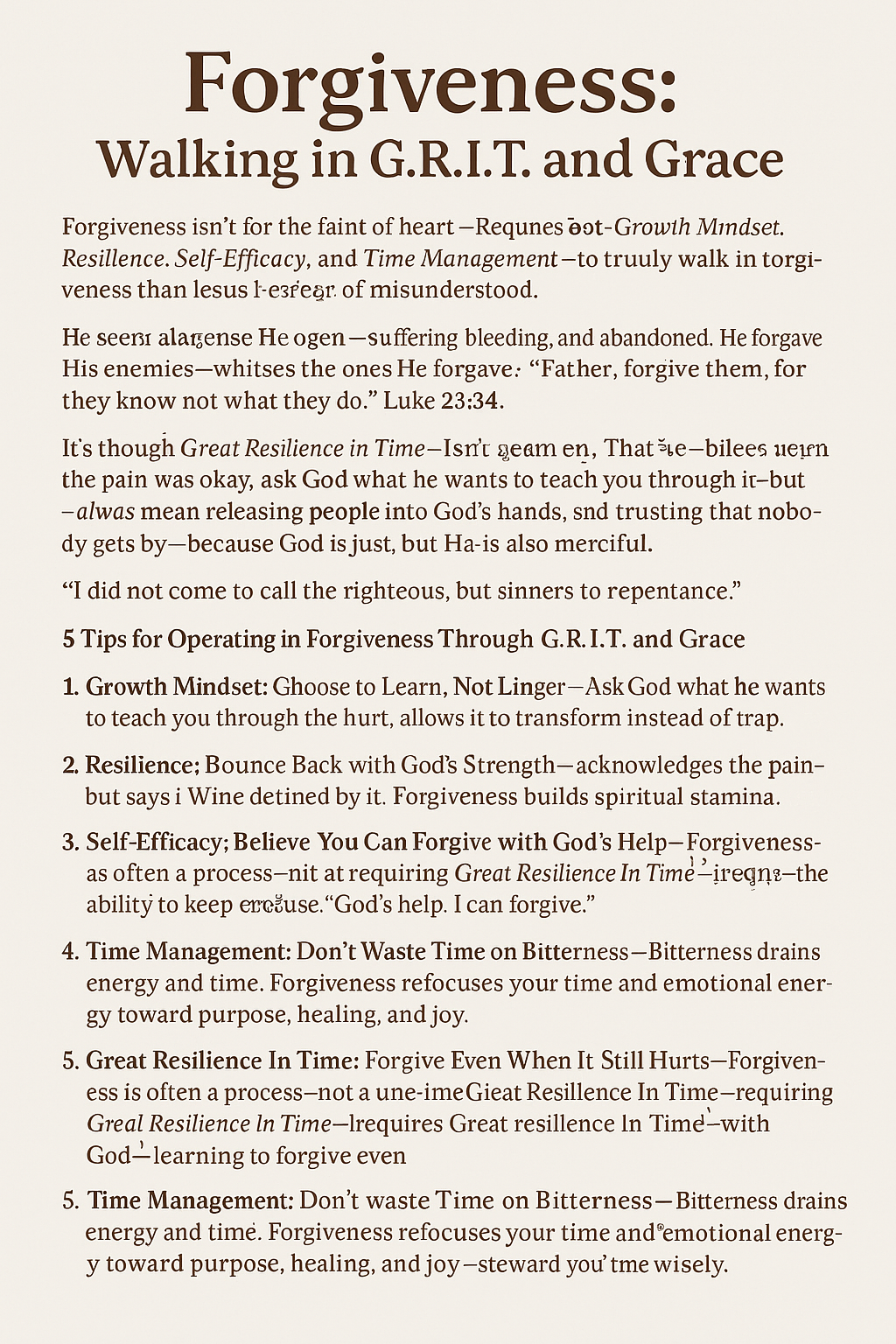
Forgiveness: Walking in G.R.I.T. and Grace Forgiveness isn't for the faint of heart. It takes G.R.I.T.—Growth Mindset, Resilience, Self-Efficacy, and Time Management—to truly walk in forgiveness, especially when you've been wronged, mistreated, or misunderstood. But there's no greater example of gritty forgiveness than Jesus Himself. As He hung on the cross—suffering, bleeding, and abandoned—He didn’t curse His enemies. He didn’t demand justice in that moment. Instead, He looked toward heaven and said: “Father, forgive them, for they know not what they do” (Luke 23:34). Let that sink in. The very people who had betrayed, mocked, beaten, and crucified Him were the ones He forgave. And He did it in real time, while the pain was still fresh. That’s Great Resilience In Time. And as followers of Christ, we’re called to do the same. We’re called to forgive those who have: • Abused us—physically, emotionally, or spiritually • Slandered us behind our backs • Taken advantage of our kindness • Lied to us, hurt us, or wronged us in ways words can’t capture Forgiveness doesn’t mean the pain was okay. It doesn’t mean you return to harmful situations. But it does mean we release people into God’s hands. We stop carrying the weight of bitterness. And we trust that nobody gets by—God is just, but He is also merciful. “I did not come to call the righteous, but sinners to repentance.” — Luke 5:32 God operates in mercy—not because people always deserve it, but because His heart is for restoration. And if we want God to operate in mercy toward us, we must be willing to pray that same mercy over those who have hurt us. Hence, I want to share with you 5 Tips for Operating in Forgiveness Through G.R.I.T. and Grace: 1. Growth Mindset: Choose to Learn, Not Linger Instead of replaying the pain, ask God what He wants to teach you through it. Every hurt can become holy ground if we allow it to transform us instead of trap us. Forgiveness is a chance to grow. Even when you find yourself lingering in the memories and wondering "What if?", choose to use the moments of hurt as an opportunity to heal and evolve into a greater version of you. 2. Resilience: Bounce Back with God’s Strength Resilience doesn’t mean you don’t feel the pain—it means you refuse to let it define you. Forgiveness builds spiritual stamina. Each time you choose grace, you build strength in your spirit. The enemy wanted that trial, setback, dissapointment to cause you to give up on God and yourself. However, you must believe that no weapon formed against you shall propser. Never allow Satan to take away your song or your purpose, no matter the weapon or vessel he chooses to attack you through. 3. Self-Efficacy: Believe You Can Forgive with God’s Help Forgiveness may feel impossible—but with God, you can do all things. Self-efficacy is about believing in your ability to move forward. Speak life over yourself: "With God’s help, I can forgive." This is not always an easy process but you can do it! Choose to speak positively about your situation. Tell God that you forgive them and take moments to think about what Jesus must have felt at the cross as he died for you. Sometimes, we are made to emulate the light of Christ so that others will have HOPE. That means we must be willing to be curicifed at thier hands for the Glory of God. However, be encouraged, for the Lord will restore you. 4. Time Management: Don’t Waste Time on Bitterness Bitterness drains energy and time. Let forgiveness help you refocus your time and emotional energy toward purpose, healing, and joy. Steward your time wisely—it’s too precious to spend in bondage. Take time for self-care. Cry it out, seek therapy, have an outlet that will help you develop and heal and mature in a healthy fashion. Understand that all of us fall short; people will most likely dissapoint you, so flow in grace. 5. Great Resilience In Time: Forgive Even When It Still Hurts Forgiveness is often a process, not a one-time event. It requires Great Resilience In Time —the ability to keep choosing grace, even when the pain is fresh. Jesus forgave while He was still on the cross. We, too, can learn to forgive even while healing. Through your forgiveness you'll find revelation that will bring your closer to your heavenly Father. Forgiveness is one of the greatest gifts you can give—to others, yes, but also to yourself. It frees your heart. It releases your soul. It makes space for God to heal what others tried to break. Jesus didn’t wait for an apology. He forgave in real time—with G.R.I.T. and grace. So today, let’s strive to do the same. Let’s live with: • A growth mindset that says, “God can use even this.” • Resilience that says, “I will not be broken.” • Self-efficacy that says, “I can do this with God.” • Time management that says, “I will not waste one more second holding a grudge.” Let’s walk in Great Resilience In Time and extend the same mercy we so desperately need. Because forgiveness isn’t weakness. It’s worship. So, wipe you tears, forgive, reset, start over, and thrive through G.R.I.T. and Grace. Love, India Want more? Visit www.india-white.com to schedule a meeting or book me for an event. Want a copy of the Grit Workbook for Clergy (Pastors) Click here!
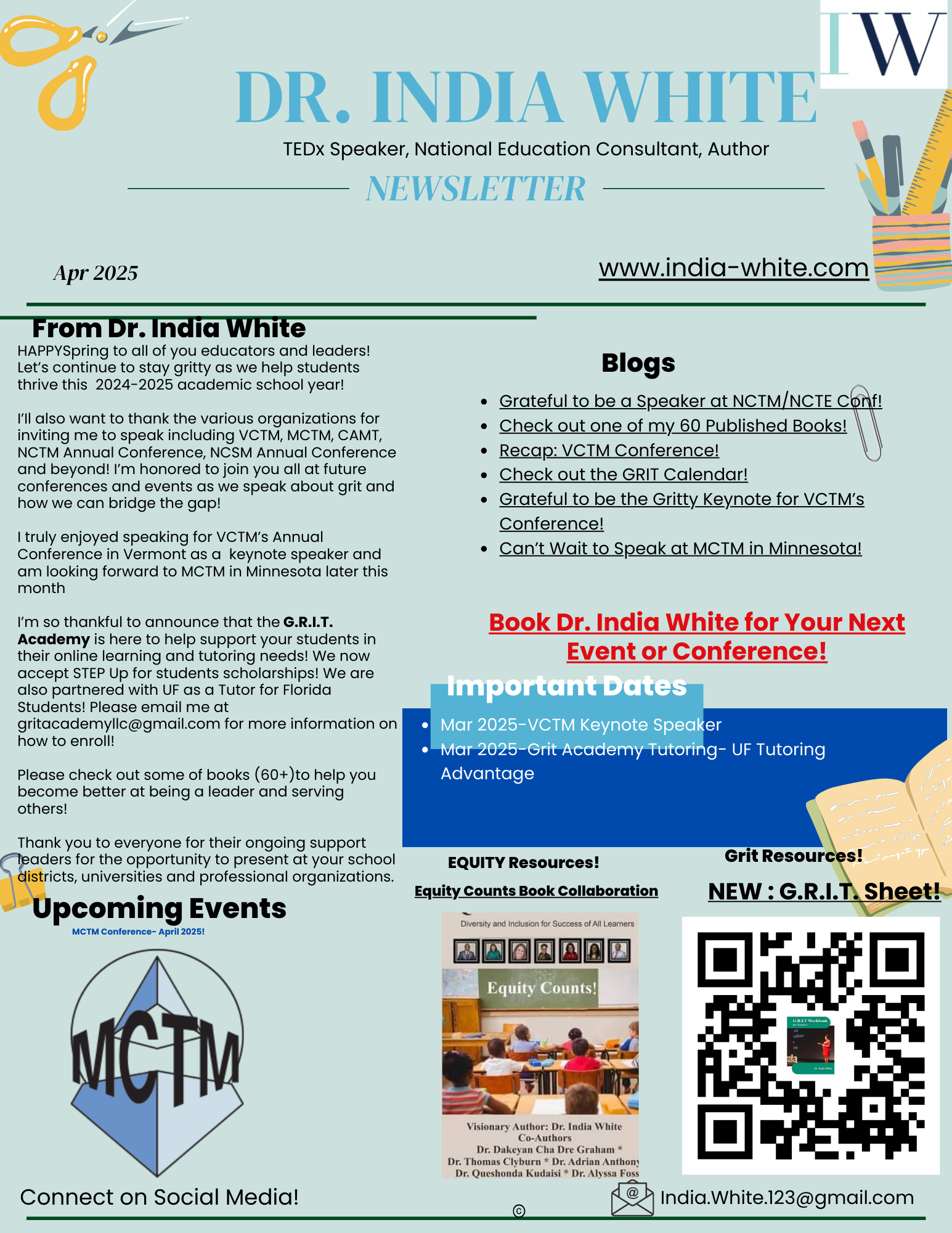
### April Newsletter: A Month of Grit and Growth April is here, and it’s shaping up to be an exciting month filled with powerful opportunities to build grit, inspire educators, and impact students. From conferences to new resources, I’m thrilled to share what’s happening this month and how you can get involved. Speaking at MCTM’s Annual Math Conference in Minnesota I’m honored to present at the Minnesota Council of Teachers of Mathematics Annual Conference this month, where I’ll be diving into how to create a Gritty Thinking Classroom. In this session, we’ll explore how the G.R.I.T. framework aligns with Peter Liljedahl’s Building Thinking Classrooms, helping educators develop a culture of perseverance, resilience, and self-efficacy in their math students. If you’re attending, I’d love to connect and discuss ways to empower students through productive struggle. G.R.I.T. Workbooks and Resources The G.R.I.T. Workbook series continues to grow, providing teachers, students, and parents with practical tools to develop growth mindset, resilience, and time management. Whether you’re looking to strengthen your own grit or help students push through challenges, these workbooks offer actionable strategies to build confidence and perseverance. G.R.I.T. Online Courses and Masterclass For those looking to take a deeper dive into grit, we’re rolling out G.R.I.T. online courses and mini-workshops designed to help educators and leaders implement grit-based strategies in their schools and classrooms. Stay tuned for our Masterclass, which will provide an interactive learning experience on how to cultivate grit in both personal and professional settings. G.R.I.T. Podcast: Conversations That Inspire The G.R.I.T. Podcast continues to feature insightful conversations with educators, leaders, and changemakers who are passionate about building perseverance and resilience. Each episode offers motivation and strategies to help you stay committed to your goals and push through challenges. Be sure to tune in for inspiring discussions that fuel personal and academic growth. Stay Connected If you’re looking for more ways to engage with the G.R.I.T. movement, be sure to check out: - www.india-white.com – Explore my work, speaking engagements, and resources - www.gritacademy.us – Learn about G.R.I.T. Academy, where we help students and educators develop the skills they need to thrive This month is all about embracing grit, growth, and resilience. Whether through conferences, podcasts, or online learning, I’m excited to continue this journey with you. Let’s keep pushing forward and building a culture of perseverance together. Stay gritty and keep striving for greatness!
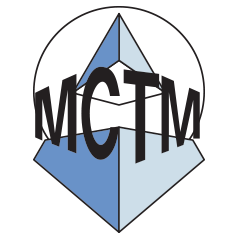
Excited to Speak at MCTM’s Annual Math Conference: Building a Gritty Thinking Classroom! I can’t wait to present at MCTM’s Annual Math Conference this April in Minnesota. This opportunity is truly special because I’ll be diving into two of my passions—grit and Building Thinking Classrooms—to help educators create Gritty Thinking Classrooms that foster resilience, problem-solving, and perseverance in students. Why Grit Matters in the Math Classroom Math is not just about numbers and equations; it’s about persistence, self-efficacy, and growth mindset. So many students struggle with productive struggle, but when we intentionally build grit, they learn how to push through challenges rather than give up. By implementing Dr. India White’s G.R.I.T. framework, we help students: - Develop a growth mindset - Build resilience in problem-solving - Strengthen self-efficacy - Improve time management and perseverance Connecting Grit with Building Thinking Classrooms Peter Liljedahl’s Building Thinking Classrooms has transformed the way we engage students in math learning. When we merge BTC structures with grit, we create an environment where students: - Tackle challenging problems head-on - Collaborate with peers to build understanding - Learn to embrace struggle as part of growth - Develop confidence in their ability to succeed In my session, we’ll explore how BTC’s 14 elements align with grit and how teachers can create a culture of perseverance in their classrooms. See You in Minnesota! If you’re attending MCTM’s Annual Math Conference, I’d love to connect. Let’s talk about how to empower students to think, struggle, and grow. Together, we can build Gritty Thinking Classrooms that transform how students learn and engage with mathematics. Let’s get gritty! See you soon in Minnesota!
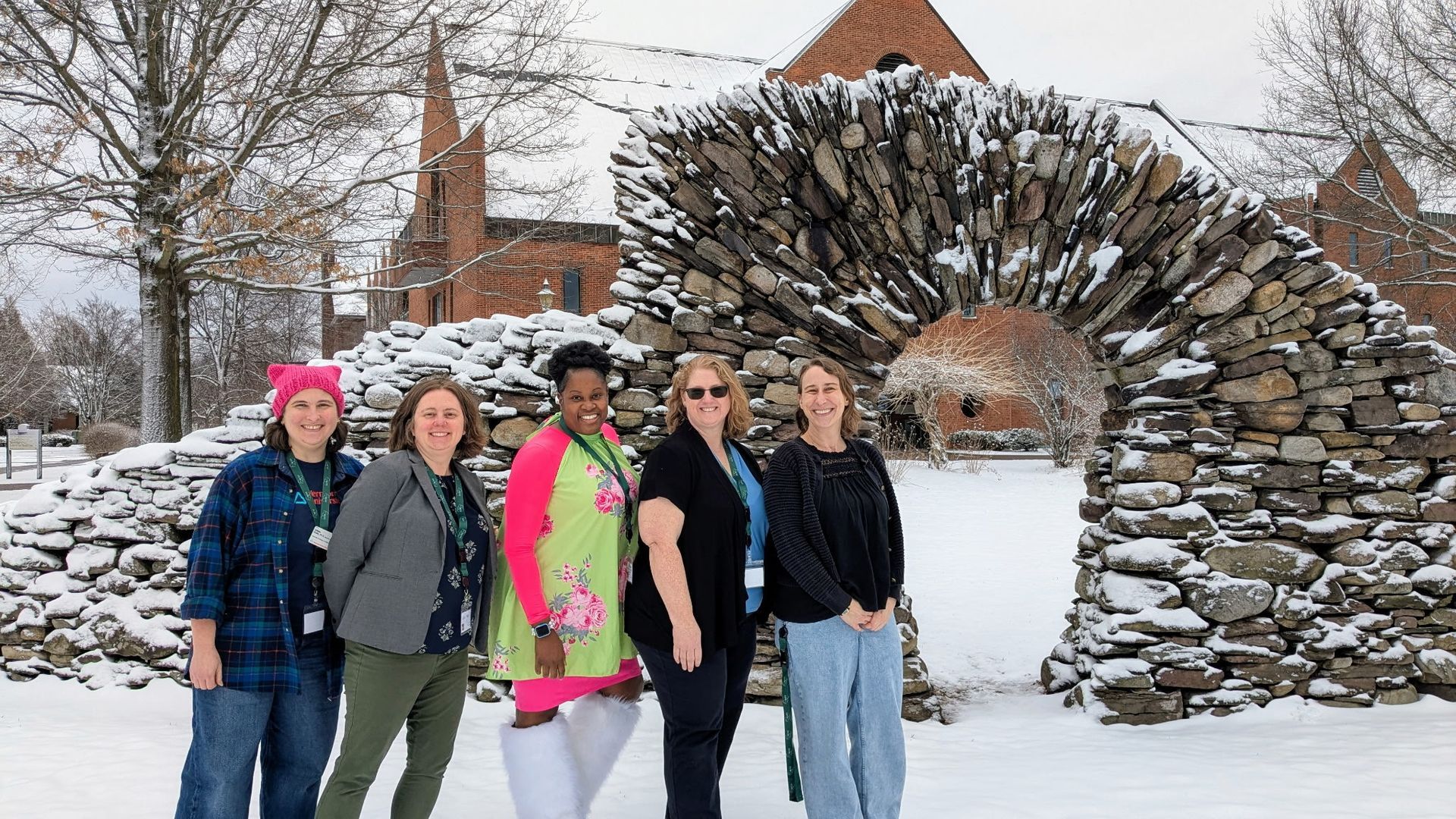
🌟 Excited to share my VCTM recap video! 🎥 Join me as I engage with teachers during my keynote, discussing strategies to best support our 8th grade math students. Together, we can make a difference! 💪📚 Check it out and let’s keep the conversation going! #drindiawhite #nctm #ncsm #vctm #vermont #nabse #naacp #education #doe
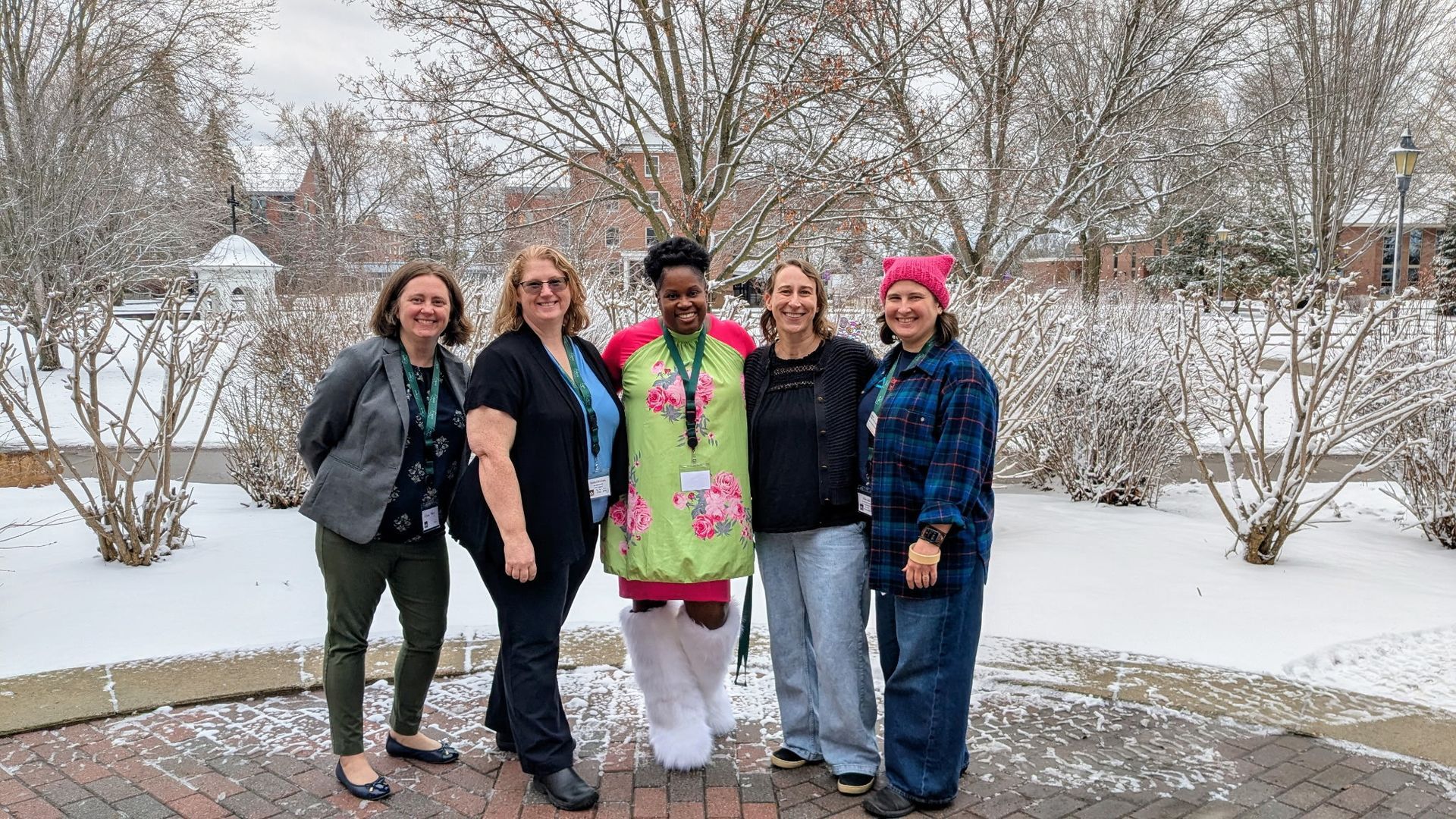
Reflection on The Power of Grit Keynote to Vermont Teachers Speaking to the dedicated educators of Vermont about the Power of Grit was an inspiring and reaffirming experience. As I shared the pillars of grit—Growth Mindset, Resilience, Time Management, and Self-Efficacy—it was evident that these concepts resonated deeply with the teachers in the room. Their commitment to fostering perseverance and confidence in their students was both heartening and energizing. Throughout the keynote, I emphasized the transformative role of a growth mindset—how students who embrace challenges and see effort as a path to mastery are more likely to persist through difficulties. I could see educators nodding in agreement as they reflected on their own students' struggles and triumphs. Encouraging students to reframe failure as a learning opportunity is a crucial shift that builds not just better mathematicians, writers, and thinkers but also more resilient individuals. Resilience was another cornerstone of the discussion. I shared stories and strategies to help students push past obstacles and develop the endurance needed to navigate academic and personal challenges. The engagement in the room reaffirmed that teachers, too, are models of resilience, especially in today’s educational climate. One of the most practical elements of the keynote focused on time management—helping students (and educators) break down overwhelming tasks, set realistic goals, and prioritize effectively. The response to this section showed that time management remains a crucial skill, not only for students learning to structure their studies but also for teachers juggling multiple responsibilities. Finally, we explored the power of self-efficacy, that deep-seated belief that one’s efforts lead to success. We discussed ways to cultivate this mindset in students through intentional feedback, scaffolding, and celebrating small wins. Seeing the teachers reflect on how they could implement these strategies in their classrooms was incredibly rewarding. This keynote reaffirmed my belief that grit is not just a personal trait—it’s a culture that educators can foster in their classrooms, schools, and communities. Vermont’s educators left the session with new insights, actionable strategies, and a renewed commitment to equipping students with the perseverance and confidence needed for success. I am grateful for the opportunity to share this message, and I look forward to seeing the impact of their work in cultivating grit across the state. Thanks Vermont Rockstars. Stay gritty!

🌟 Super excited to announce that I’ll be the keynote speaker at the VCTM Annual Conference in beautiful Vermont! 🎉 Huge thanks to the amazing VCTM rockstars for this incredible opportunity! Let’s dive into the power of grit together! 💪✨ I can’t wait to share insights and connect with fellow educators, students, and math enthusiasts. Join us by registering below: https://vctm.wildapricot.org/event-5950535 Let’s make this an unforgettable experience! #drindiawhite #grit #tedx #vctm #teachers #students #math (I don’t own music copyright)

Join us on the Let's Get Gritty Podcast with Dr. India White, featuring special guest Heidi Diercks, a retired educator, and life coach! Check out Heidi's coaching nuggets here :chrome-extension://efaidnbmnnnibpcajpcglclefindmkaj/https://mail.google.com/mail/u/0?ui=2&ik=89c50e1d3a&attid=0.1&permmsgid=msg-f:1826500568311074330&th=19590896f43b0e1a&view=att&zw&disp=inline&acrobatPromotionSource=GmailNativeViewer Watch on Spotify: https://creators.spotify.com/.../Lets-Get-Gritty-Podcast... #drindiawhite #grit #tedx #lifecoach #education
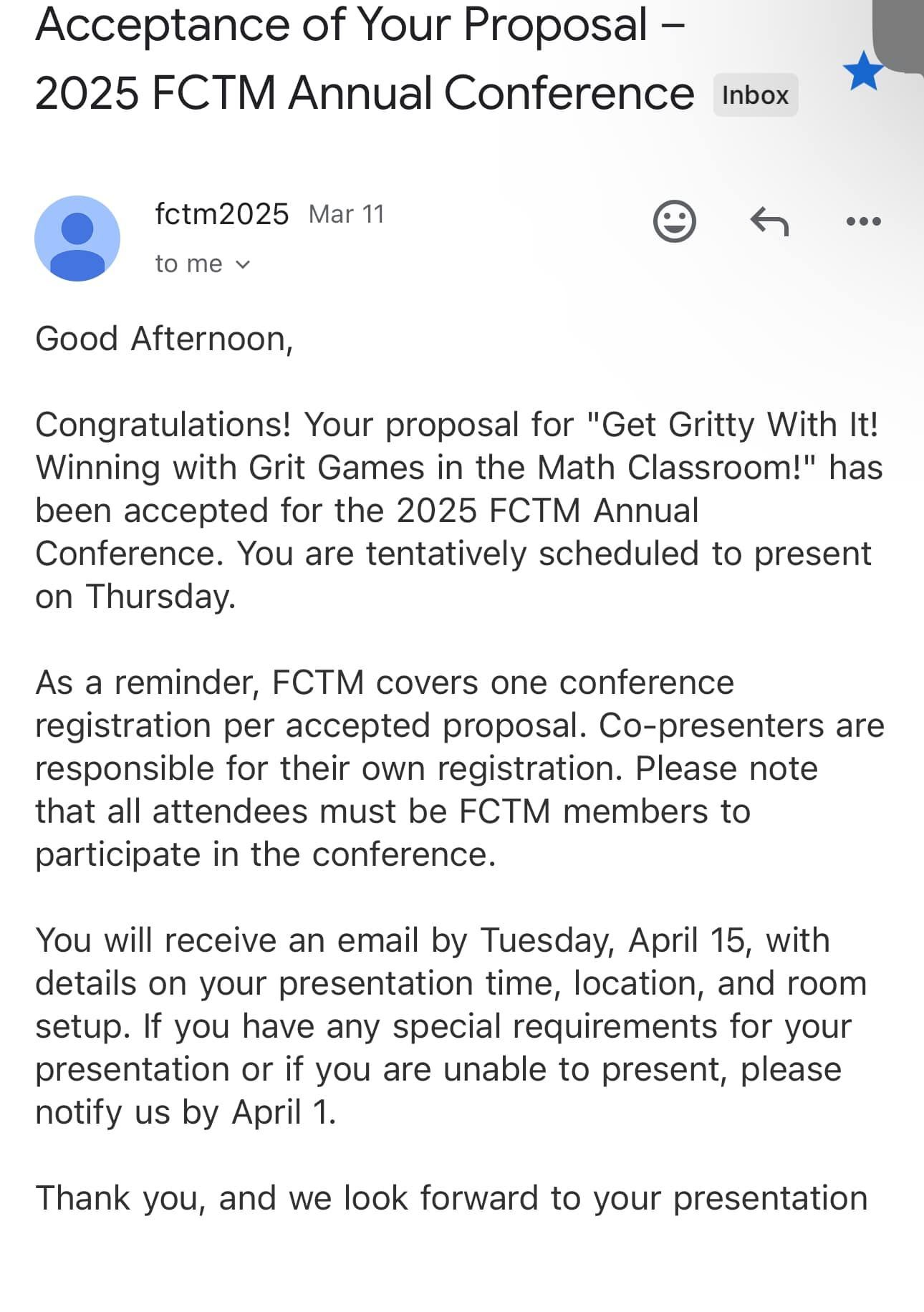
🌟 Super grateful to announce that I’ve been selected to speak at FCTM this year! 🎉 Let’s dive into the topic of grit and its importance in education! 💪✨ Be sure to register by visiting their website. A huge thank you to the FCTM leaders for this incredible opportunity! 🙌 #DrIndiaWhite #Grit #TEDx #Math #Educators #Teachers #Students #FCTM #NCTM #NCSM

